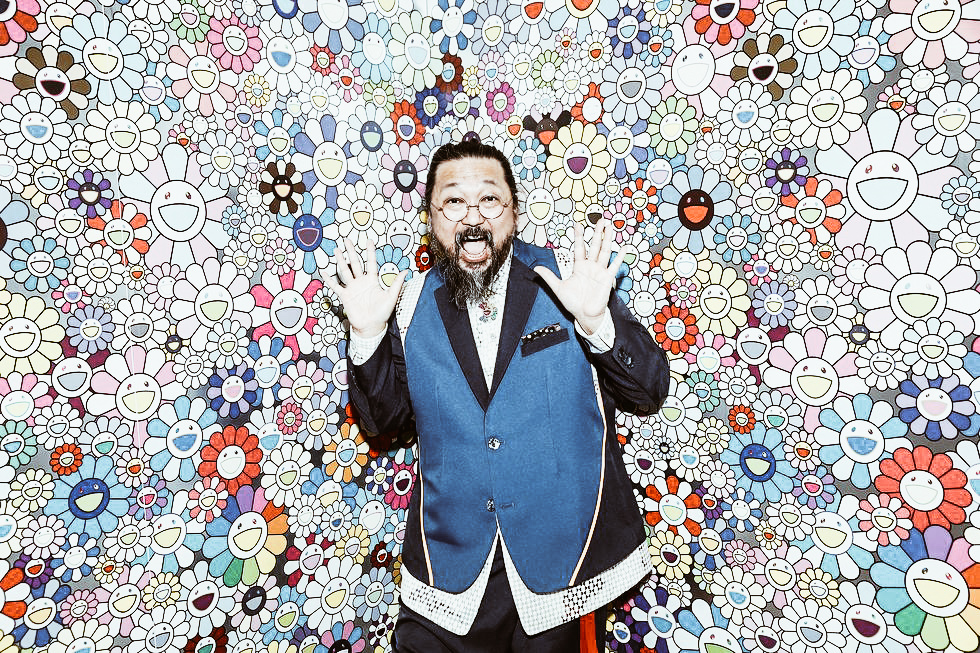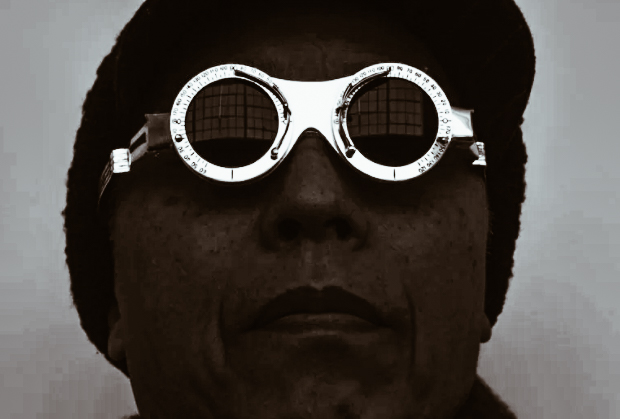Japan, like Italy, is a country very attached to art and many contemporary Japanese artists have exported their works abroad.
Contemporary Japanese artists abroad
Author: Sara
Museums, art fairs and expositions have allowed the Japanese contemporary art world to look outwards. At last, even great artists are going out beyond the borders of the Rising Sun. We at Japan Italy Bridge have decided to introduce you to some of the most important contemporary artists who have received worldwide acclaim. We are talking about creatives like Yayoi Kusama, Tatsuo Miyajima, Takashi Murakami, Yoshitomo Nara and Hiroshi Sugimoto. Are you ready for this trip?
Yayoi Kusama

photo credits: wsj.com
Born in Nagano in 1929, Yayoi Kusama is perhaps the best known among Japanese contemporary artists. She began to show her immense artistic talents at the age of 10. The difficult relationship with her mother and trauma that deeply affected her led Kusama to paint her experiences on the canvas. The physical environment and her personality vanished swallowed up by the space that moved at an incredible speed. She also began to draw inspiration from Georgia O’Keeffe and wrote a letter to her. The artist replied and Kusama moved to New York where he began making monochrome paintings that immediately attracted attention.
The early 1960s were certainly not easy for a woman, especially a Japanese woman, and being able to exhibit in galleries was a difficult undertaking. However, she did succeed and became increasingly well known in the field of conceptual art. Her works include attributes of feminism, minimalism, surrealism, surrealism, art brut, pop art and abstract expressionism, all united by the polka dot technique.
Back in Japan, the artist was able to enjoy the success she deserved. Her works were exhibited at the Museum of Modern Art in New York, the Tate Modern in London and the National Museum of Modern Art in Tokyo. Between 1994 and 2012, Kusama collaborated with the musician Peter Gabriel and especially with Marc Jacobs, artistic director of Louis Vuitton. Kusama now lives in the Seiwa Psychiatric Hospital in Japan by personal choice and continues to paint daily in his studio in Shinjuku.
Tatsuo Miyajima

photo credits: smh.com.au
Born in Tokyo in 1957, Tatsuo Miyajima graduated from the oil painting course at the Fine Arts Department of Tokyo National University of Fine Arts and Music. He began experimenting with performance art before moving on to light-based installations.
Miyajima stated that the desire to create more lasting work, in contrast to the necessarily ephemeral nature of his performance and actions, motivated him to start working on sculptures and installations. Using contemporary materials such as electrical circuits, video and computers, Miyajima’s highly technological work focused on the use of digital light-emitting diode (LED) counters. These numbers, flashing in continuous and repetitive cycles from 1 to 9, represent the journey from life to death, whose purpose is symbolised by the “0”, a number that never appears in her work.
Miyajima has had solo exhibitions at the Ullens Center for Contemporary Art in Beijing, the Miyanomori Art Museum in Hokkaido, and the San Francisco Museum of Modern Art. She has also taken part in the Venice Biennale and numerous group exhibitions, from the Museum of Contemporary Art in Sydney to the Hiroshima City Museum of Contemporary Art. Since 2006 Miyajima has been Vice President of the Tohoku University of Art and Design.
Takashi Murakami

photo credits: crfashionbook.com
Born in Tokyo in 1962, Takashi Murakami began his studies of traditional Japanese painting at Tokyo Geijutsu Daigaku. However, his aspiration was to become a great mangaka. After graduating with a degree in traditional Nihon-ga painting, he won a MoMA PS1 scholarship. He moved to New York enriching his influences with the works of Andy Warhol and drawing inspiration from the production philosophies of film companies such as Disney, LucasFilm and Hayao Miyazaki’s Ghibli Studio.
Among the various solo exhibitions, there is one that will mark the birth of a new Japanese art movement: “Superflat”. This was the title of the exhibition at MOCA in Los Angeles which became the artist’s programmatic and aesthetic manifesto systematically promoting the value of Japanese art independent of Western influences. An art capable of expressing the cultural reality of the new Japan. Superflat in fact mixes otaku elements with Kabuki and jōruri elements, fused and flattened into images with smooth surfaces and brilliant colours in which the aesthetic themes are amplified and exalted.
Murakami collaborated with Marc Jacobs and created the limited-edition Cherry Blossom bag for Louis Vuitton, designing for the occasion a kawaii pattern with the monogram of the fashion company.
Thanks to his aesthetic and entrepreneurial approach to art, Murakami has fully entered the international elite art scene, selling through third party companies, objects destined for the mass market, inventing and promoting the Kaikai Kiki and GEISAI brands.
Yoshitomo Nara

photo credits: scmp.com
Born in Hirosaki in 1959, Yoshitomo Nara studied at the Prefectural University of Fine Arts and Music in Aichi and at the Kunstakademie in Düsseldorf.
Nara is known for his paintings whose subjects are deceptively simple. We find children and animals in pastel colours with cartoon-like features with little or no background that appear both sweet and sinister. They also sometimes wield weapons such as knives and saws and their looks are accusatory. His art is a metaphor that accuses people of attacking the innocence of childhood.
Nara’s objective perversions are rooted in Japanese popular culture, but these influences are mixed with those of Eastern and Western society. Her paintings, sculptures, installations and engravings explore the themes of isolation, rebellion, spirituality and religion.
Hiroshi Sugimoto

photo credits: artslife.com
Born in 1948 in Tokyo, Hiroshi Sugimoto, after obtaining his Bachelor of Arts degree, moved to Los Angeles to study photography. These studies led him, in the 1970s, to establish himself as one of the most famous contemporary photographers.
His work deals with history and temporal existence, investigating themes such as time, empiricism and metaphysics. Sugimoto has received numerous grants and his works are exhibited in the collections of the Tate Gallery, the Museum of Contemporary Art, Chicago, the Metropolitan Museum in New York and the Guggenheim in New York.
Like many contemporary artists, Sugimoto has collaborated with fashion, this time with the French company Hermès. Sugimoto’s colour photos for Hermes’ foulards were exhibited in June 2012 at the Museum of Cultures in Basel. During the 2014 Venice Biennale, Sugimoto unveiled his “Glass Tea House Mondiran” at Le Stanze del Vetro on the island of San Giorgio Maggiore.
The art world is full of facets given by continuous inspirations, by the search for the ego, by the need to express profound concepts without the use of words. Which of the contemporary Japanese artists have impressed you the most? Let us know in the comments!
Share this:
- Click to share on Facebook (Opens in new window)
- Click to share on Twitter (Opens in new window)
- Click to share on Tumblr (Opens in new window)
- Click to share on Pinterest (Opens in new window)
- Click to share on Telegram (Opens in new window)
- Click to share on WhatsApp (Opens in new window)
- Click to share on Reddit (Opens in new window)
- Click to print (Opens in new window)






